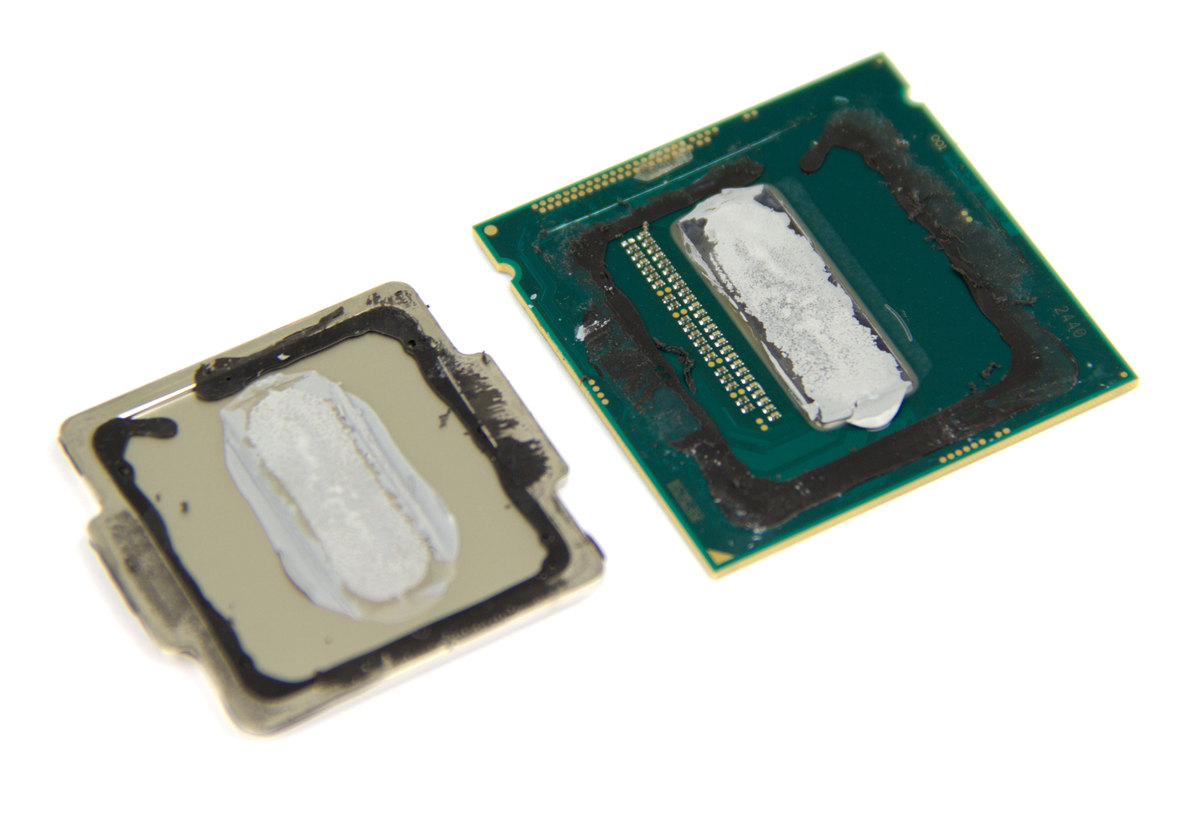When the new Haswell K-series processors were still under NDA, there was a rumor that Intel was going to be moving back to soldering the CPU die to the heat transfer plate instead of using a TIM (thermal interface material). This rumor has been pretty well busted since we now know that these CPUs use what Intel is calling NGPTIM, or Next-Generation Polymer Thermal Interface Material. While exactly what this material is made of is still unpublished by Intel, it has generally been assumed that it is simply an improved version of the same type of thermal paste that is traditionally used between a CPU and a heatsink.
We recently received samples of both the 4690K and 4790K from Intel and, as occasionally happens, the 4790K ended up having some stability issues. This is very rare for Intel CPUs and they quickly sent us a replacement, but it gave us the perfect excuse to delid the 4790K to see exactly what is under the hood.
| Intel Core i7 4790K |
|
|
Intel Core i7 4770K
Courtesy of |
|
| Intel Core i7 3770K |
|
As you can see, the new NGPTIM material looks very, very similar to the old TIM material. However, reviewers like Tom's Hardware have found that at the same clock rate and CPU voltage, the 4790K runs about 6C cooler than the 4770K. On the other hand, the stock speed of the 4790K is a good amount faster than the 4770K and also draws more power, so other reviewers like Legit Reviews have shown that at stock settings, the 4790K runs about 5C hotter under load than the 4770K.
So while the 4790K does not go back to solder like the rumors said, the new NGPTIM actually appears to work very well. Overclockers might not be as happy with the lack of solder, but at least there should not be much of a reason to delid your own CPU to replace the stock TIM with a different material.
